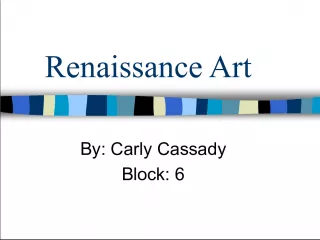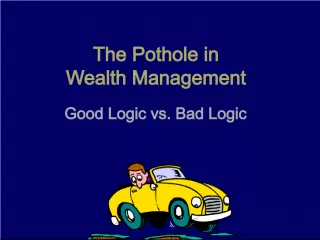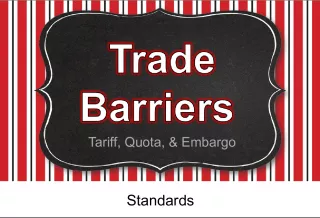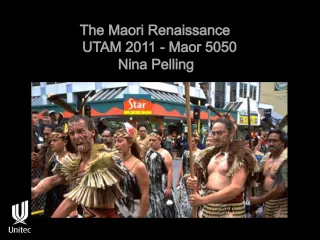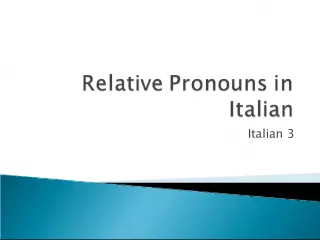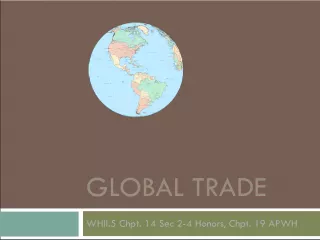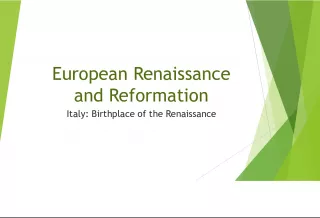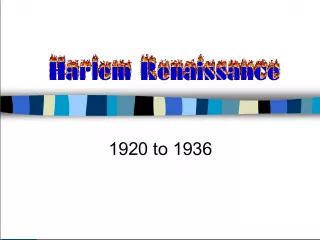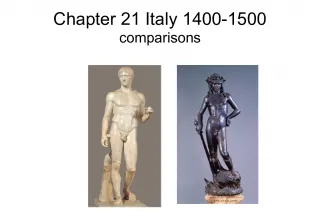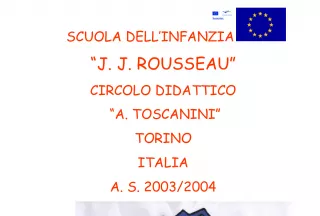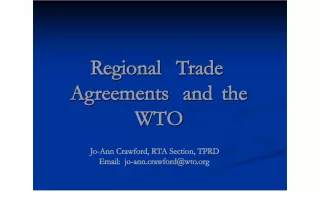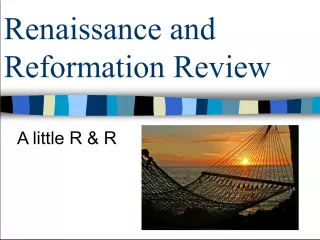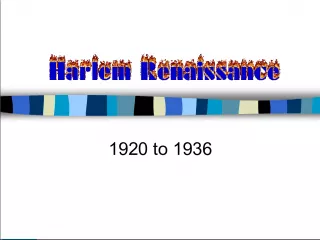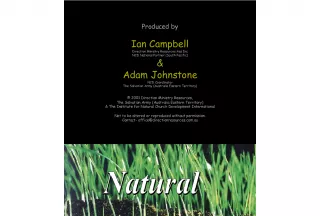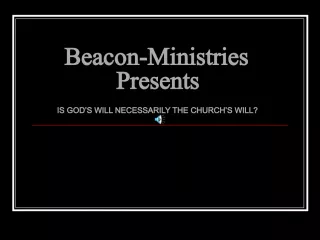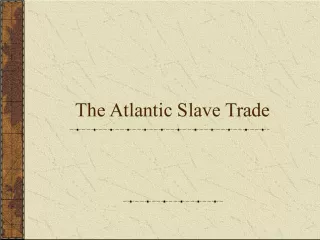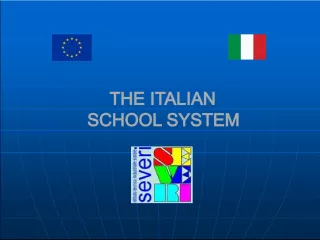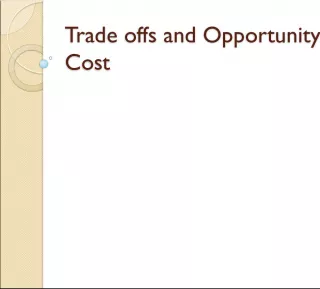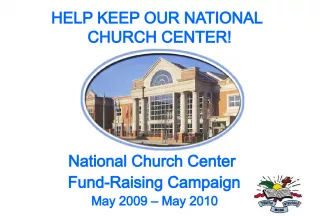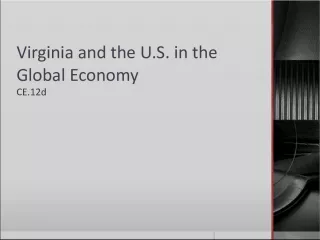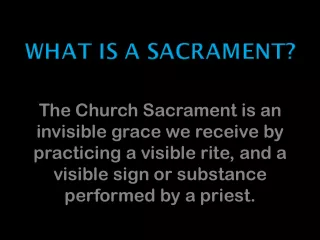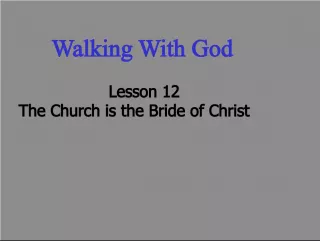The Italian Renaissance: Wealth, Trade, and the Church
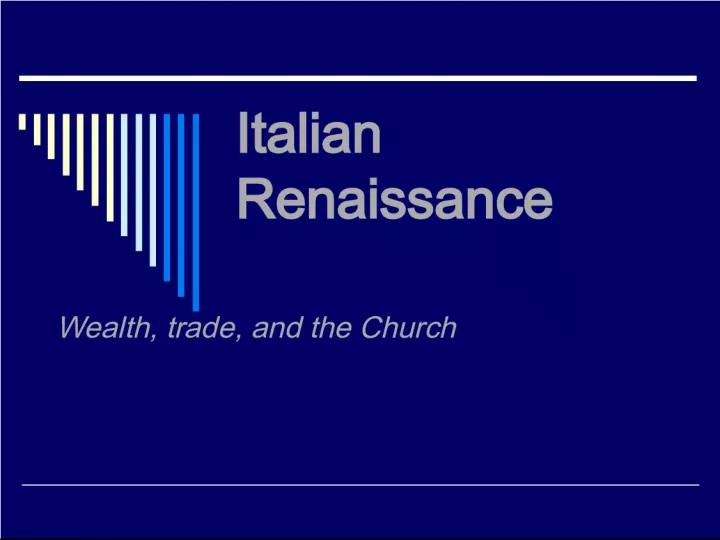

This historical period, spanning from 1420-1600 AD, was defined by a range of social, cultural, and artistic developments in Italy. Wealth and trade grew
- Uploaded on | 2 Views
-
 samaksh
samaksh
About The Italian Renaissance: Wealth, Trade, and the Church
PowerPoint presentation about 'The Italian Renaissance: Wealth, Trade, and the Church'. This presentation describes the topic on This historical period, spanning from 1420-1600 AD, was defined by a range of social, cultural, and artistic developments in Italy. Wealth and trade grew. The key topics included in this slideshow are . Download this presentation absolutely free.
Presentation Transcript
Slide1ItalianRenaissance Wealth, trade, and the Church
Slide2Italian Renaissance ( 1420 - 1600 A.D. )
Slide3European Population11 th to 14 th centuries Justinian Reformation (533 A.D.) Black Death 1328
Slide4Italian City-States14 th , 15 th , and 16 th Centuries Power and growth of European Empires Focus on mono-culturism Rise of humanistic studies, science, and arts Unstable political and economic situation
Slide5Italian City-States (cntd)14 th , 15 th , and 16 th Centuries Shift in regional powers Volatility in economies, trade, social structures Main Point: economic, social, or political stability are not needed for intellectual and cultural experimentation.
Slide6Urban Wealth 12 th to 13 th Centuries-start and apex (Italy) Venice Concentration of wealth and the church: sin, sin, and damnation of the soul: usury!! Birth of City-States Monarchy vs. Regional Autonomy
Slide7City-States Firenze/Florence: City-State Medieval Period: Holy Roman Emperor vs. Roman Pope Space for autonomy Banking and Trade
Slide8City-States and Regionsin Italy Early Renaissance Papal States (Romagna) Republic of Firenze and Venice Kingdom of Napoli Duchy of Milano
Slide9Concentration of Wealth Wealth: non-aristocratic vs. nobility Banking and middle class City-States: self-funded autonomy Reorganization of Social Structures Nobility and Banking interests Dwindling of nobility power and papacy
Slide10Social Structure in City-States Old nobility and merchant class Emergent capitalists and bankers Less wealthy merchants and tradespeople Poor and destitute (1/4 or population, approx) Domestic slaves
Slide11Commerce: a blessing or acurse? Deep class divisions Gender relations Slavery (Southern Italy-12 th century) Slaves: Muslims from Spain, North Africa, Crete, the Balkans, and the Ottoman Empire.
Slide12Commerce: a blessing or acurse? Slavery and domestic service Ownership: sell and “enjoyment” Off-spring and freedom Parental rights Plantation Slavery: Cyprus and Crete
Slide13Firenze Role as cultural center Rulers and glorification of wealth Patrons of arts, sciences, philosophy, architecture, literature Cosimo de’Medici: 1389-1464 Platonic Academy Lorenzo and Piero de’Medici (1449- 1492)
Slide14Conclusions Socio-economic and political changes led to intellectual, scientific, and artistic experimentation. Power struggles btx Roman Emperor and Pope open space for political autonomy in Italy. Trade and political autonomy facilitated the development of banking industry Concentration of wealth made possible the rise of City-States, trade, and reorganization of social structures Deep divisions between social classes: old nobility and merchant class; emergent capitalists and bankers; Less wealthy merchants and tradespeople; poor and destitute and domestic slaves
Slide15Conclusions Concentration of wealth ended the influential role of nobility. Commercial diversity (Sugar Cane Plantations) gave rise to plantation-style slavery during the Renaissance Church officials rose from the ranks of nobility; strong political roles focused on expanding power Last but not least: economic, social, or political stability are not needed for intellectual and cultural experimentation
Slide17Thank You
